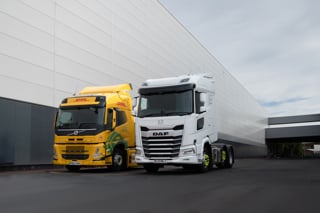Heat management specialist Zircotec is conducting research and development to help commercial vehicle (CV) manufacturers deal with a combination of exhaust system challenges.
Internal exhaust temperatures are being increased to improve emissions performance ahead of tighter future standards, while external temperatures must be reduced to meet safety legislation and packaging needs.
The scale of the problem for vehicle manufacturers is significant: internal temperatures in some cases will rise from 500°C to in excess of 700°C, while the maximum external temperature, currently as high as 480°C, could be mandated down to just 70°C. Finding a cost-effective way to meet these targets has become paramount for commercial vehicle manufacturers.
“Heat management is easy if the only requirement is to reduce heat loss and you have enough space to install sufficient insulation; however, that just isn’t the case in most applications,” said Zircotec group sales director, Graeme Barette. “Conventional insulation would typically need to be up to 70mm thick to achieve the thermal barrier performance required. There is not room for such a thickness even with commercial vehicles, without re-routing the exhaust line and introducing knock-on effects that compromise other systems and overall packaging, to say nothing of the cost involved.”
Through research projects, Zircotec is developing a range of solutions for several manufacturers, using its proprietary ceramic thermal barrier technology in innovative new ways. The company is analysing each individual component of the exhaust system to identify ways of reducing heat transfer from the hot exhaust gas to the outer containment. This helps to maintain exhaust gas temperatures and speeds up cold-start and the time taken for systems to warm-up, while reducing the operating temperature of the containment structure, enabling a wider choice of more economic materials.
“One of our clients is aiming to maintain the exit gas temperature at no less than 87% of the temperature at which it leaves the engine, for reasons of efficiency,” explained Barette. “This requires us to minimise every possible source of heat loss; even the metal exhaust clamps can be significant in this respect, and we are working on ceramic coating options with a leading clamp supplier.”
Zircotec is partnering with a leading vehicle manufacturer and exhaust component suppliers to investigate ways to integrate the ThermoHold, the company’s ceramic based heat shield coating, within the exhaust manifold. Prototypes have been produced by the manifold supplier at their facilities and early trials and the associated test results have been very promising, according to Zircotec.
Another key industry focus is on the thermal management of after-treatment systems to significantly improve conversion efficiency. By using thermal barrier technology inside and around the DPF (Diesel Particulate Filter) and catalyst, the internal gas temperature can be increased, ensuring that heat is delivered and focussed where it is most needed, while simultaneously reducing external heat transmission. Zircotec is working with another customer on the insulation of a modular catalyst unit.
“Our experience in the thermal management of vehicle exhausts spans three decades and includes competition cars, supercars and motorcycles, but CVs are becoming an increasingly important sector for us,” said Barette. “Our current research and development programs highlight the benefits for customers of working with us from an early stage to fully understand the different sources of heat loss and establish the most cost-effective solutions.”


















Login to comment
Comments
No comments have been made yet.